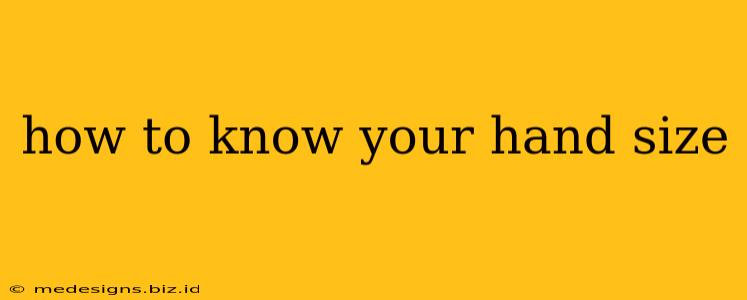Knowing your hand size is surprisingly useful! Whether you're shopping for gloves, musical instruments, or even just curious about your body measurements, understanding how to accurately determine your hand size is key. This comprehensive guide will walk you through several methods, ensuring you get a precise measurement every time.
Why Knowing Your Hand Size Matters
Before diving into the how-to, let's explore why knowing your hand size is beneficial:
-
Finding the Perfect Fit: This is the most obvious reason. Whether you're buying gloves, tools, sports equipment (like baseball gloves or golf clubs), or musical instruments (like guitars or violins), accurate hand measurements ensure a comfortable and functional fit. A poorly fitting glove can be uncomfortable and ineffective, while a poorly fitting instrument can hinder your playing.
-
Medical Purposes: In some medical contexts, hand size measurements can be relevant. Doctors might use hand size as a general indicator of body size or in certain diagnostic procedures.
-
Personal Interest: Simply understanding your body measurements can be a fascinating personal pursuit!
Methods for Measuring Your Hand Size
There are several ways to measure your hand size, each with its own advantages and disadvantages:
Method 1: Using a Ruler or Tape Measure
This is the most common and straightforward method:
- Preparation: You'll need a flexible tape measure or a ruler and a pen or pencil. Find a flat surface to work on.
- Measurement: Extend your hand completely. Using the tape measure, wrap it around your hand at its widest point, usually just below the knuckles. Ensure the tape measure is snug but not overly tight. Alternatively, use a ruler to measure the distance between your thumb and pinky finger when your hand is spread out. This gives you hand length. You could measure the circumference of your palm similarly.
- Record: Note down your measurement in centimeters or inches. You may want to record both the length and circumference.
Important Considerations:
- Dominant Hand: It's generally recommended to measure your dominant hand, as it's likely slightly larger.
- Consistency: To ensure accuracy, repeat the measurement a few times and use the average.
Method 2: Using a Hand Sizing Chart
Many online retailers selling gloves or other hand-related products offer hand sizing charts. These charts provide guidelines correlating hand measurements with standard sizes. Simply find a chart and follow its instructions for measuring your hand. Remember that sizes can vary between brands.
Method 3: Using a Hand Sizing Tool (If Available)
Some specialty stores might have physical hand sizing tools available. These tools can be more accurate than using a tape measure alone, as they're designed specifically for this purpose.
Understanding Hand Size Terminology
When you are looking at hand size charts, you might encounter different terminology. For example:
- Hand Length: The distance from the tip of your longest finger (usually the middle finger) to the base of your palm.
- Hand Circumference: The measurement around the widest part of your hand, typically just below the knuckles.
- Palm Width: The measurement across your palm, from the base of your thumb to the base of your little finger.
Remember to clearly distinguish these measurements when recording your hand size.
Conclusion
Knowing your hand size opens up a world of perfectly fitting products and a deeper understanding of your own body. Whether you choose a tape measure, a sizing chart, or a dedicated tool, make sure you follow the instructions carefully and record your measurements accurately for the best results. Now you're ready to confidently shop for gloves, instruments, and anything else that requires a precise hand measurement.
